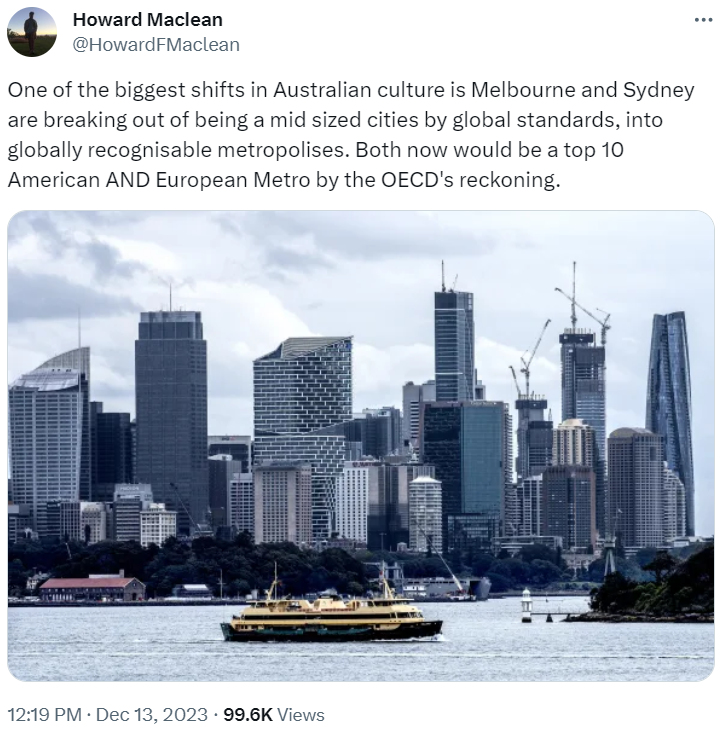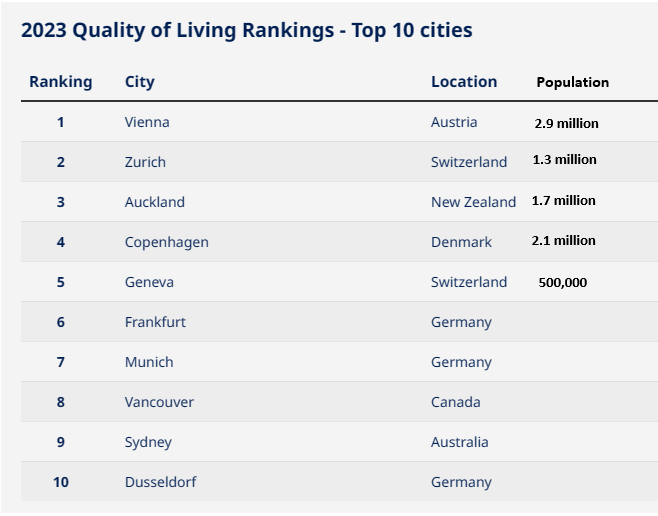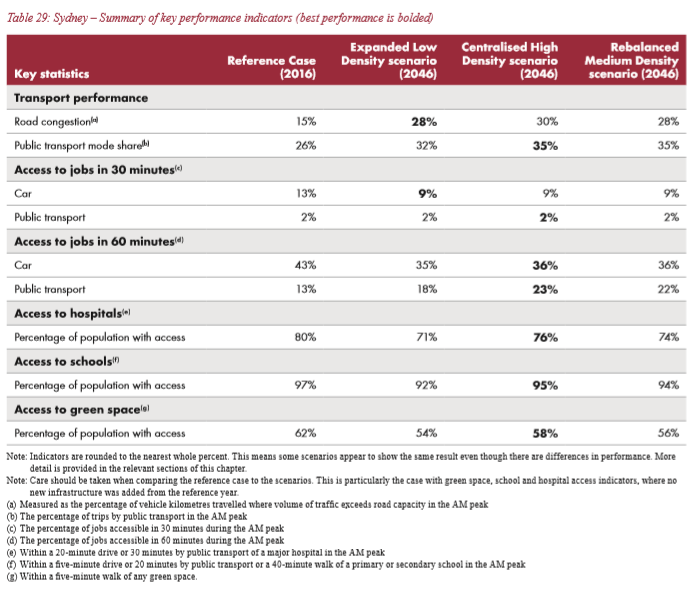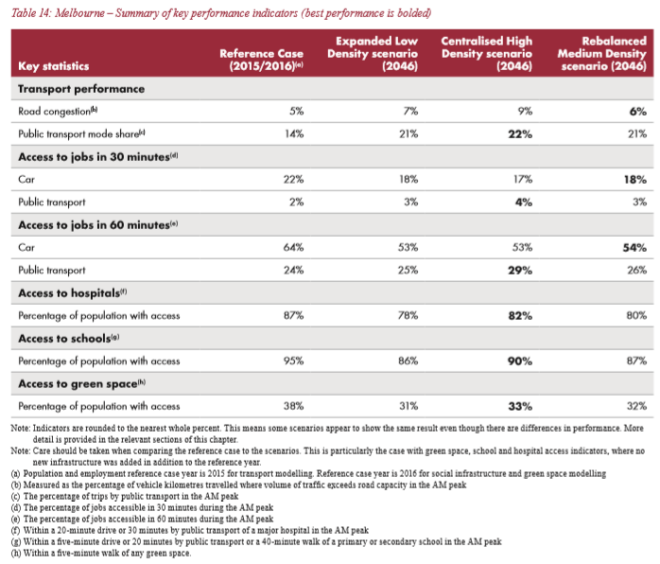Howard Maclean, convenor of YIMBY group Greater Canberra, posted a thread on Twitter (X) stating that Melbourne and Sydney are fast transforming from “mid-sized cities by global standards” into “globally recognisable metropolises”:

“In 2001, Melbourne had a population of 3.5 million on the OECD’s reckoning (and 3.38 by the ABS’s)”, Maclean says.
“Today both Melbourne and Sydney are around the same size as Berlin. We are only a few years away from both Melbourne and Sydney being noticeably larger than any European city that is not Istanbul, Paris, London or Madrid”.
Maclean argues that this transformation into mega-cities “is a good thing”, because “Australian prosperity in the 21st century lies not in minerals, but that a freakishly high proportion of Australians live in excellent cities with world class universities, thick labour markets and good infrastructure. Urban agglomeration effect to the moon”:

Why is bigger always better to these whackos?
Mercer’s Quality of Living City Ranking 2023 shows that the five most liveable cities have greater metropolitan populations under 3 million people:

Mercer ranks cities for factors including recreation, housing, public services and transport, economy, political and social environment, and education.
Hilariously, large cities like London (45th), Paris (32), New York (40) and Madrid (46) have relatively poor liveability scores, which undermines Maclean’s arguments.
Sydney and Melbourne are already straining under nearly 20 years of rabid population growth and are ceasing to function properly.
Housing affordability and quality has been shot to pieces, and there are chronic shortages of all manner of economic and social infrastructure, along with growing inequality.
Therefore, Maclean is deluded if he believes that living standards will magically improve when these cities grow to around 9 million people by 2060.
Even pro-immigration booster, Professor Peter McDonald, admitted that liveability and size are inversely correlated once a city grows beyond 5 million people:
“When a city reaches five million people it only performs efficiently with the best public transport systems and infrastructure,” he told news.com.au.
“Melbourne’s public transport system is good but not as good as some other truly global cities like Paris and Tokyo. It’s not as efficient.”
He said Melbourne is already “under pressure with schools and hospitals” because population projections around 2003 forecast much slower growth than what’s happened.
“We went in the wrong direction,” Prof McDonald said.
Infrastructure Australia’s own projections unambiguously showed worsening traffic congestion and reduced access to jobs, schools, hospitals and green space under every build-out scenario as Sydney’s and Melbourne’s population balloon to a projected 7.4 million and 7.3 million people respectively by 2046, let alone around 9 million by the 2060s:


Australia’s population has already swelled by 7.6 million people this century, with this growth concentrated in Sydney and Melbourne.
The outcome has been a disaster, with living standards and the nation’s productivity growth collapsing.
Running the same failed growth model over the next 40 years is the very definition of insanity and will deliver the same results: lower housing affordability and quality, crush-loaded economic and social infrastructure, lower productivity, increased inequality, and further degradation in Australia’s natural environment.

